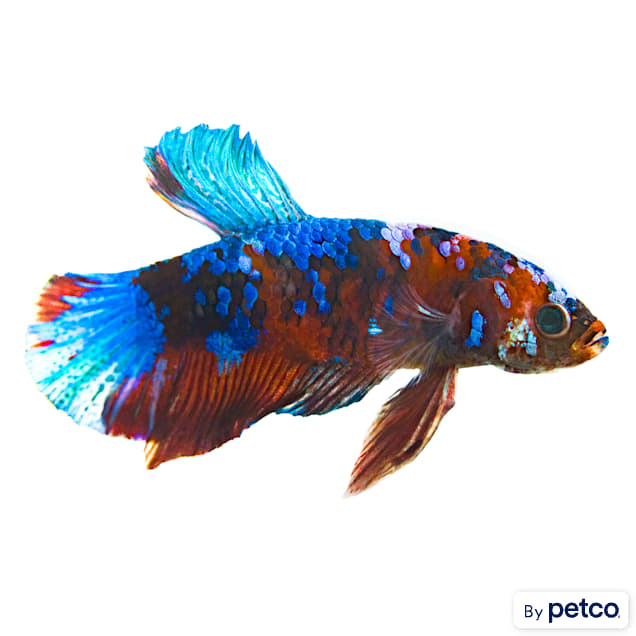The Ultimate Betta Fish Treatment Overview for New Pet Owners
The Ultimate Betta Fish Treatment Overview for New Pet Owners
Blog Article
Just How to Reproduce Betta Fish Effectively: Professional Techniques and Insights for Hobbyists Wanting To Increase Their Betta Collection
Breeding Betta fish requires a nuanced understanding of genetics and ecological problems, making it vital for hobbyists to approach the process with both persistance and care. Creating an ideal reproduction environment, selecting the ideal pairs, and observing the details of their courtship habits are fundamental actions that can significantly influence the end result.
Comprehending Betta Fish Genes
Comprehending the genetics of Betta fish is essential for effective breeding, as it influences attributes such as shade, fin form, and actions. Betta fish exhibit a varied selection of shades and patterns, mainly determined by their genetic make-up. The primary genetics responsible for coloration include the "B" gene for blue, "D" gene for red, and the "C" genetics for color strength. Dog breeders can adjust these qualities by choosing certain moms and dad fish that show wanted qualities.
Along with coloration, fin morphology is an additional significant element of Betta genes (betta fish). The shape and dimension of fins are affected by different genetics, including those that establish whether the fins are short, long, or veil-shaped. Recognizing these genetic variants assists dog breeders forecast the phenotypic results of their offspring
Additionally, behavioral attributes such as aggressiveness and territoriality can likewise be affected by genetics. These actions play an essential duty in the breeding process, as they can influence generating success and the total temperament of the resulting fry. By adequately understanding these genetic concepts, breeders can make enlightened choices, ultimately boosting their breeding programs and attaining preferable results.
Preparing the Breeding Atmosphere
Creating an optimal breeding atmosphere is important for the effective reproduction of Betta fish. The very first step in preparing this setting is to choose an appropriate reproduction tank, preferably ranging from 5 to 10 gallons. This dimension enables for adequate swimming room and the establishment of territories. The storage tank ought to be outfitted with a heater to keep a stable temperature level in between 78 ° F and 80 ° F, which is important for motivating spawning actions.
Following, think about making use of a sponge filter or an air stone to provide mild water blood circulation without producing solid currents that can emphasize the fish. It is important to mount plants or breeding cones to supply concealing spots and promote convenience for the lady during the spawning procedure. Drifting plants, such as Java moss or water sprite, can additionally create a more natural surroundings while promoting bubble nest structure by the man.
Before presenting the breeding sets, ensure the water is conditioned and devoid of hazardous chemicals, such as chlorine or hefty metals. betta fish. Normal water adjustments should be carried out to maintain ideal water top quality, boosting the chances of effective reproduction. With these preparations in place, the breeding atmosphere will certainly support the health and health of both Betta fish
Picking Reproduction Pairs
Choosing the right breeding sets is important for achieving effective Betta fish recreation. Healthy Betta fish exhibit vibrant shades, clear eyes, and energetic habits.
Temperament is an additional important factor to consider, as Betta fish are understood for their aggressive nature. It is suggested to select a male and lady that show compatible personalities to lessen stress throughout the reproducing procedure. A calm man can encourage a smoother courtship, while a female that is as well hostile might interfere with the process.
Genetic background likewise plays a considerable function in the high quality of the offspring. Reproducing fish that are genetically varied can lower the threat of genetic wellness problems and boost the helpful resources overall vigor of the fry. It is useful to research the family tree of both the male and female, focusing on preferable attributes such as fin type, color scheme, and size.
The Breeding Refine
The breeding procedure of Betta fish calls for cautious preparation and attention to information to ensure an effective end result. Originally, it is vital to prepare a suitable breeding tank, preferably a 5-10 gallon aquarium with a temperature maintained at 78-80 ° F. The tank needs to be furnished with a heating unit, filter (preferably sponge kind to avoid strong currents), and lots of marine plants for the lady to conceal.
Once the setting is set, present the picked breeding pair to the container, enabling them to adapt. Observe their behavior; the male will certainly show intricate courtship rituals, consisting of flaring his fins and building a bubble nest. If the lady shows passion, she will present vertical red stripes showing preparedness for spawning.
When the woman is responsive, the pair will involve in a mating embrace, during which the male feeds the eggs. Maintaining optimal water problems throughout this period is important for the growth of healthy Betta fry.
Caring for Betta Fry

Feeding Betta fry is critical, as they need a diet regimen high in protein. They can be fed infusoria or liquid fry food, transitioning to finely crushed top notch pellets as they grow. Feed small parts multiple times a day to encourage healthy and balanced growth without straining the container with uneaten food.

As they grow, monitor their development very closely and separate any type of hostile individuals to avoid injury. By offering a supporting atmosphere and correct nutrition, hobbyists can effectively raise Betta fry into lively, healthy fish, ultimately boosting their reproduction undertakings.
Final Thought
Effective Betta fish breeding needs meticulous interest to genetic choice, ecological problems, and look after the fry. By comprehending the genes of Betta fish and preparing a proper reproduction atmosphere, hobbyists can improve the opportunities of generating vibrant, healthy offspring. Choosing compatible breeding sets and carefully checking the courtship and spawning procedures are essential. Lastly, providing optimum take care of the fry guarantees their healthy and balanced growth, adding to a flourishing Betta collection.
Report this page